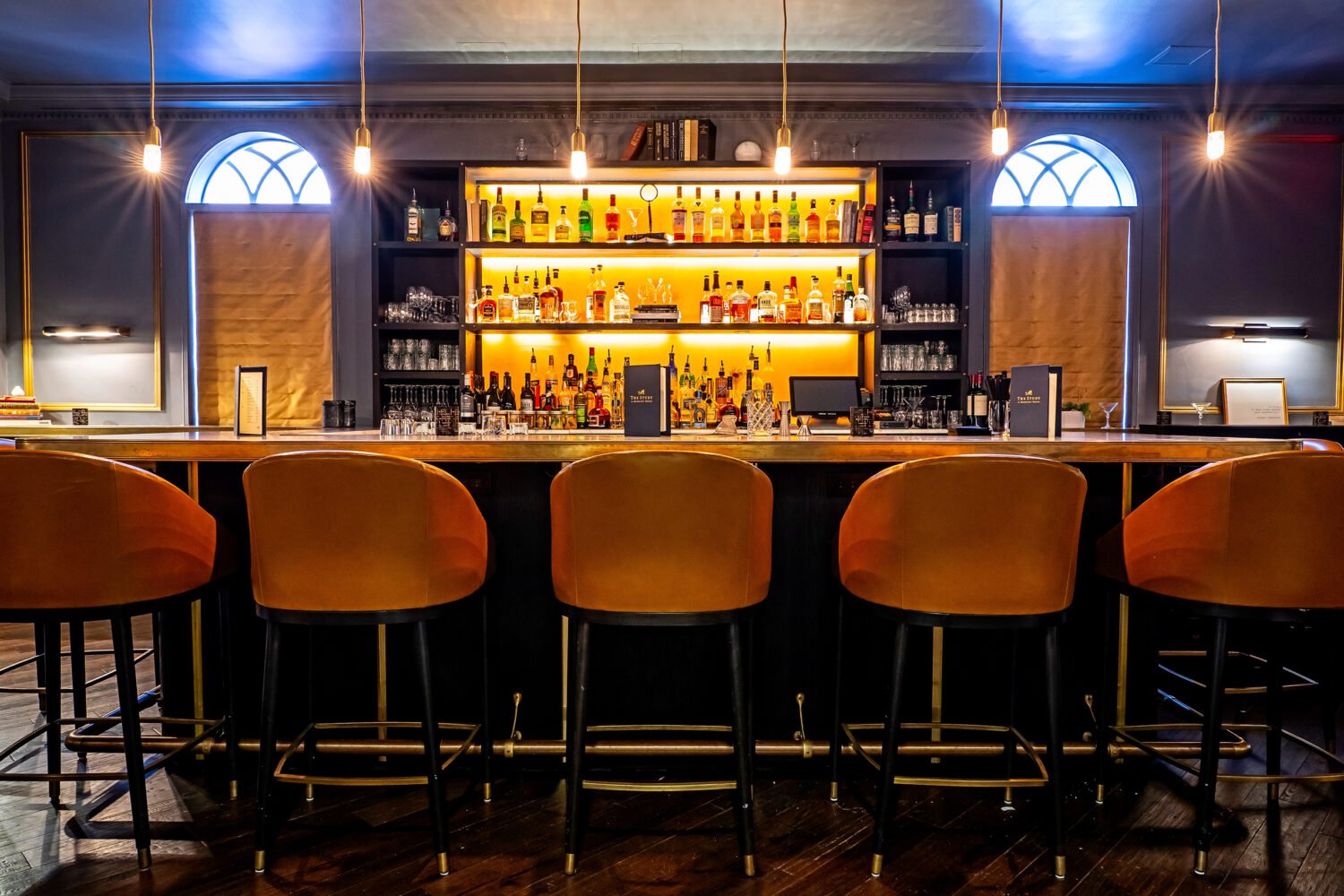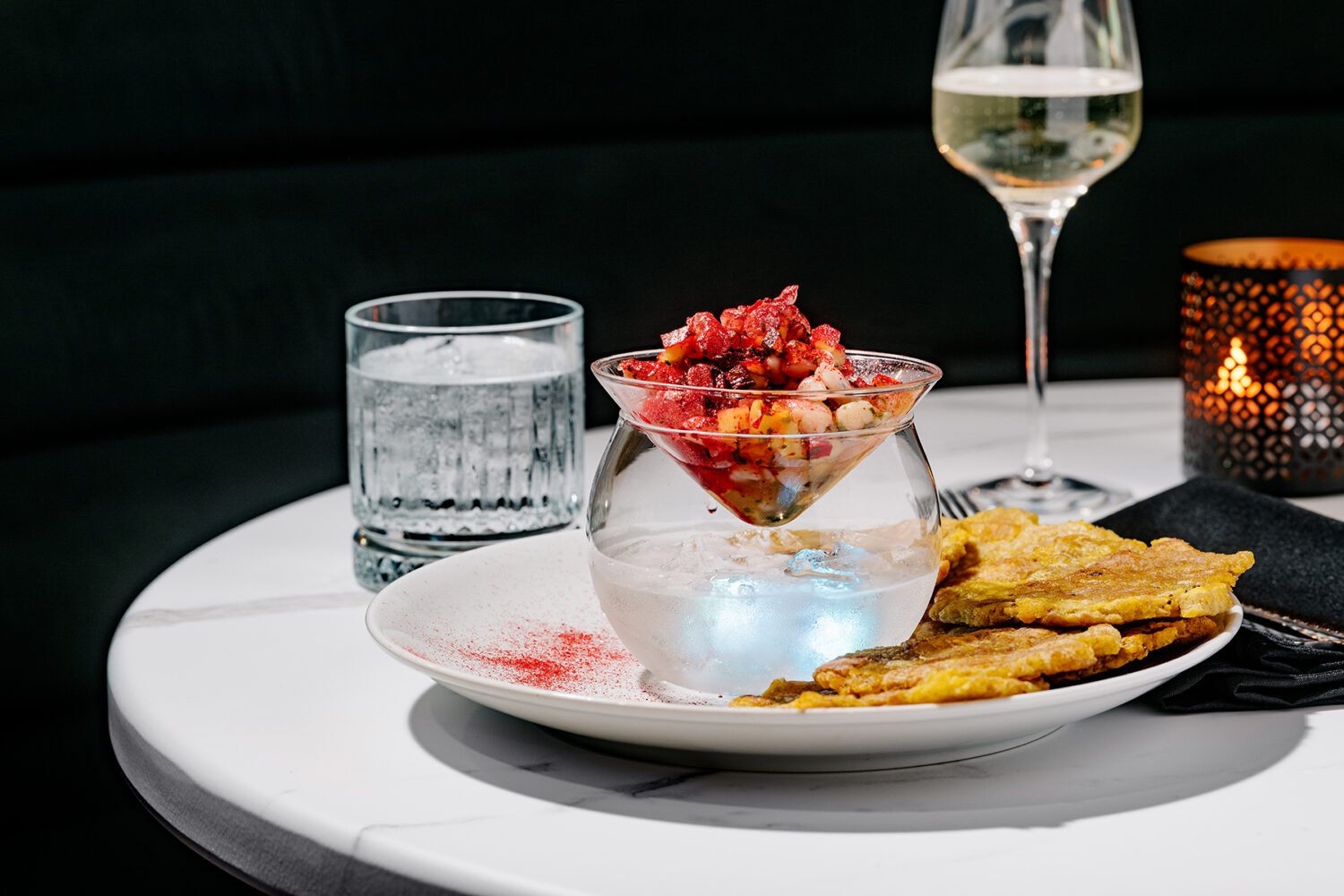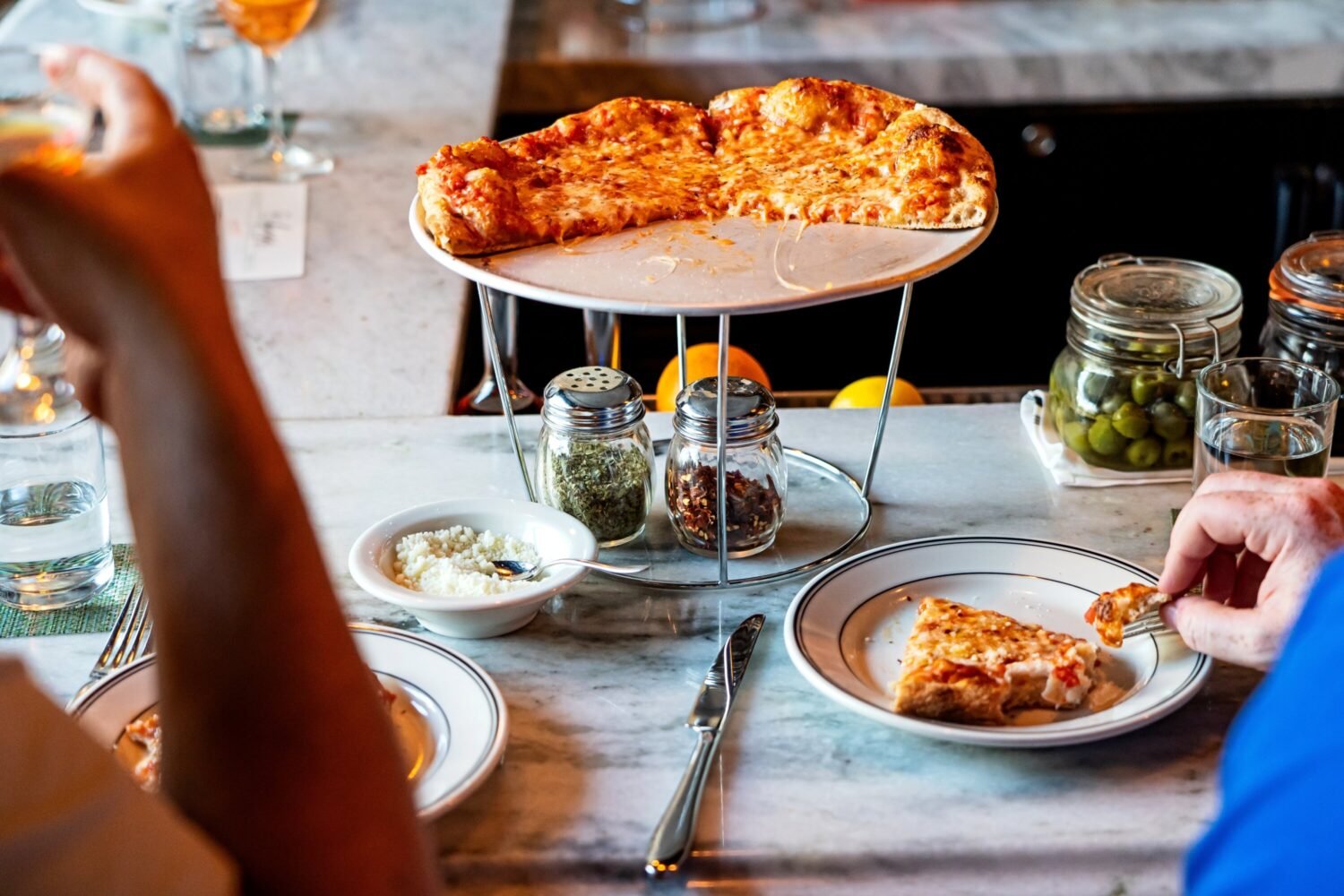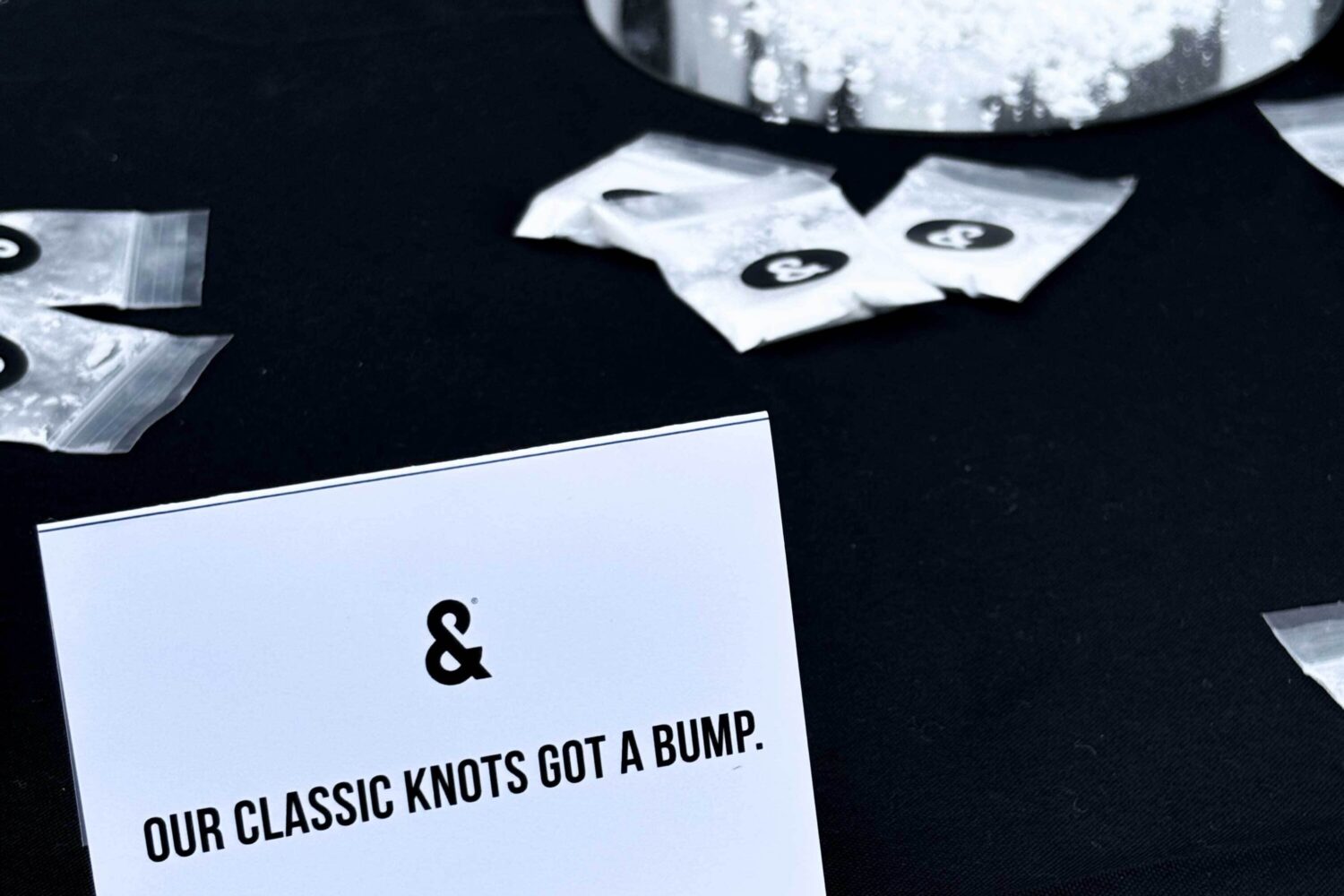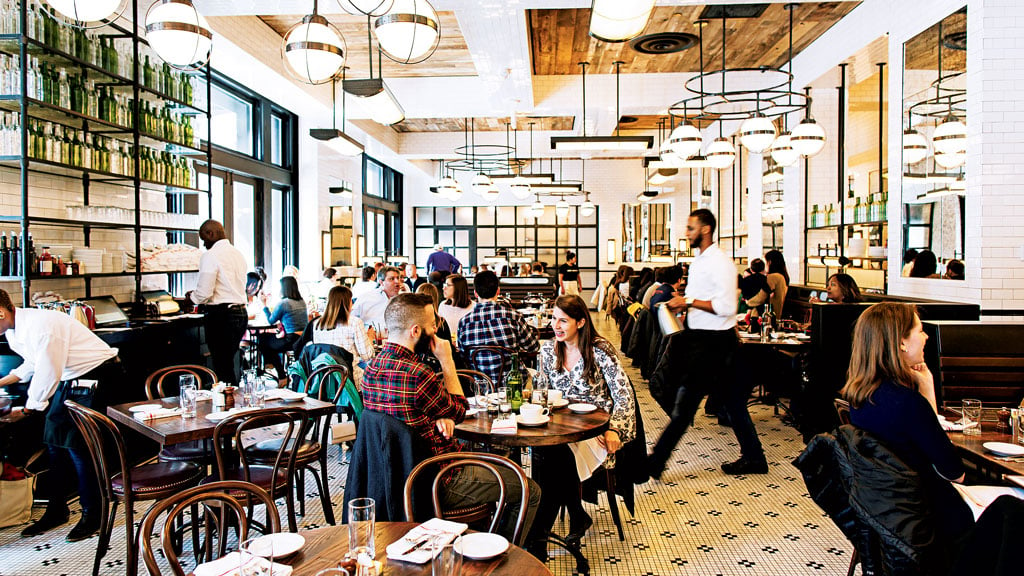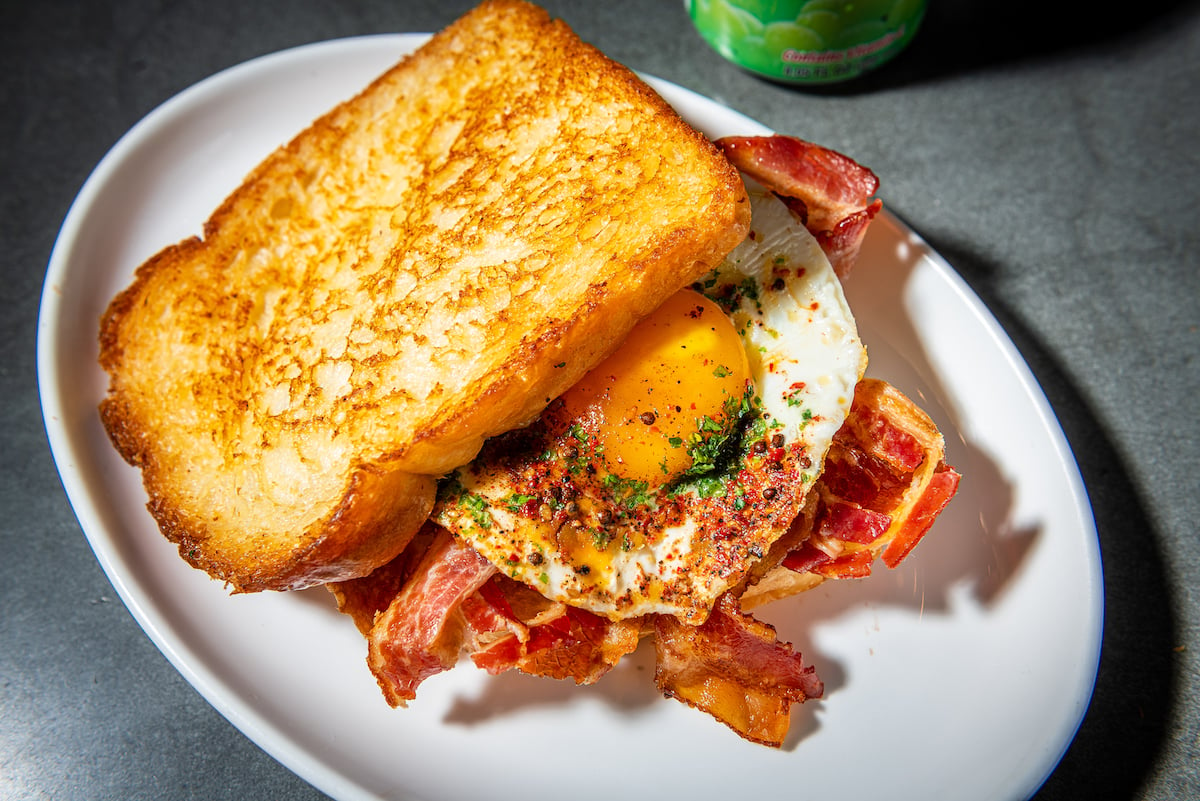After more than a decade of devotion to delicate Neapolitan Margherita pies, then a dalliance in the past few years with fat, brick-cheese-laden Detroit-style squares, Washington has a new fixation: the tavern pizza. The style feels like a welcome respite—the opposite of precious, yet also the opposite of a cheese bomb.
The hallmark of a tavern pie is an ultrathin, almost cracker-like crust. The sauce and cheese are spread all the way to the edges, which get nicely crisp. The pies are round but often sliced into a tic-tac-toe board of squares. They’re great in the moment or straight out of the fridge, and they travel well. The style has kitchen appeal, too, at a time when staffs and resources are still limited: The crust is relatively easy to make and form, and it can’t support heavy-handed toppings.
Tavern pizza has roots all over the country—New Jersey, Chicago, and Boston are hot spots. But around here, it’s been less of a thing. Johnny Spero, who grew up in Baltimore, doesn’t remember having it as a kid. Yet the chef/owner of the Georgetown tasting room Reverie—and soon-to-open Bar Spero in downtown DC—has made it the centerpiece of his menu at Pentagon City’s Nighthawk Brewery & Pizza (1201 S. Joyce St., Arlington), his collaboration with the beermakers behind Aslin. Spero’s obsession with the style arises more from the time he came of age—the ’90s, as a triplet with two parents who worked full-time—than where he grew up. His inspo for the four-month-old Nighthawk is, wait for it, frozen Totino’s Party Pizza.
“It was thin and crispy and light and flaky,” he says. “As a kid, I was like, ‘Why isn’t all pizza like this?’ ” Spero says he has shouted Totino’s out on Instagram so much that he received a gift of branded socks from the pizza company—they arrived the same week Reverie won its first Michelin star.
Still, the pies at Nighthawk are big and shareable and devoid of the kind of ingredients you’ll find on the side of a Totino’s box, such as imitation mozzarella (which itself has 23 ingredients, such as sodium aluminum phosphate). Spero dries out his dough for two days to help achieve maximum crunchiness. He calls finding just the right pepperoni “a journey.” The kitchen finishes each pie with a dusting of fennel pollen.
There are a few cheffy combinations, such as a pie with littleneck clams, roasted garlic, and an Alfredo-like sauce, but the most successful pizzas here lean simpler: pepperoni with pickled peppers and hot honey, or a white pizza with mozzarella, provolone, and fontina, or just straight cheese and red sauce. It’s worth grazing through other parts of the menu, with its smash burgers, smoky French onion dip, and tater tots smothered in beef chili.
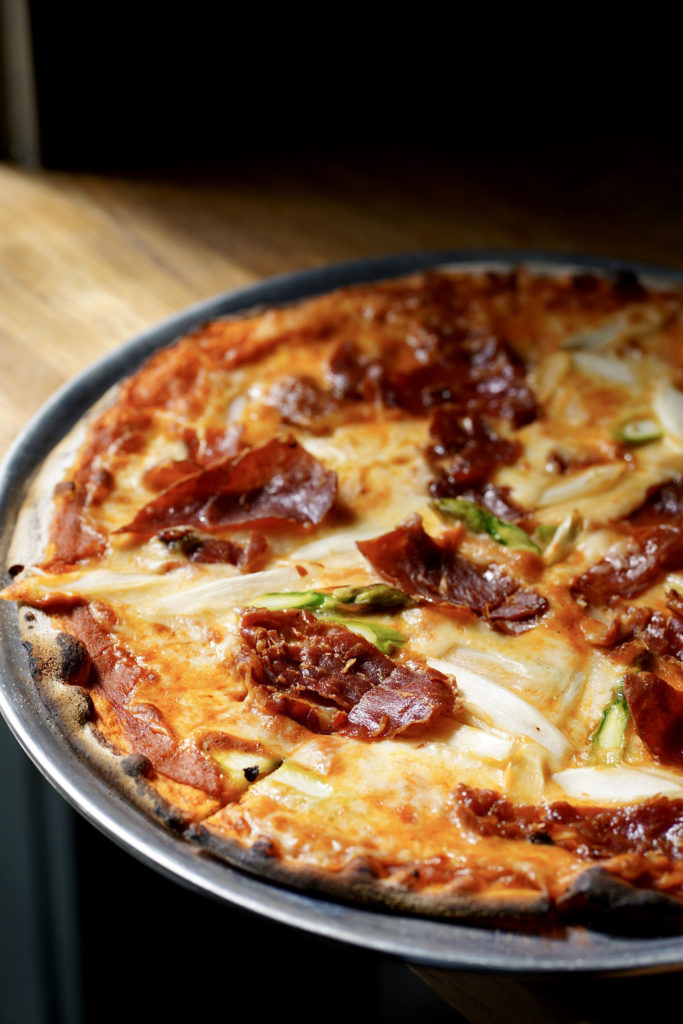
Nighthawk’s ’90s fixation doesn’t stop with pizza. Its neon-lined, white-tiled decor was inspired by the snack shop on the high-school sitcom Saved by the Bell. There are arcade games in the corner and Nirvana on the speakers. All that’s missing is a whiff of CK One.
You’ll also find tavern pizza at the newly reopened Logan Circle beer destination ChurchKey (1337 14th St., NW) and the nine-year-old U Street hangout the Fainting Goat (1330 U St., NW). Nathan Beauchamp, who oversees the menu at the latter, is likewise a Totino’s stan who grew up on the stuff. The chef originally started doing tavern pizza in December. He liked it because even if you eat half a pizza, “you don’t feel so bogged down, and you can still try other things on the menu.” U Street, he says, has changed over the years, with not as many customers ordering apps and entrées—so he saw the pizzas as a gateway. Catching a show at the nearby Lincoln Theatre and just want something quick? His pies take about nine minutes to make.
The Fainting Goat’s pizzas are more personally sized, expertly crispy (even out of a delivery box), and topped with a nicely zesty sauce. You can design your own, with choices like lamb sausage and pickled Hatch chilies, or opt for one of the seasonal creations, such as a lovely pie with prosciutto and slivers of white and green asparagus. Beauchamp says the trickiest part of getting his pizzas right was dealing with DC’s hard water, which results in a dough that doesn’t turn crunchy enough. He uses filtered water instead, letting his dough ferment for three days.
Pizza is now the focus of the Fainting Goat’s formerly gastropubby menu. The rest of it has been streamlined, with snacks, a pasta, and a burger. My favorite add: a terrific ode to an Italian American restaurant salad, with cucumbers, olives, tomatoes, and pickled peppers in a creamy pecorino dressing.
![barpie 2.km[1] - Washingtonian](https://www.washingtonian.com/wp-content/uploads/2022/07/barpie-2.km1_.jpg)
One place that has decidedly not been influenced by the Totino’s gods is Colony Grill in Clarendon (2800 Clarendon Blvd., Arlington), which opened in late 2020 but has 87-year-old roots in its Stamford, Connecticut, flagship. Its entire menu is tavern pizza—including a salad pizza and a breakfast pizza. While its setting feels like a generic Irish pub, its brittle-crusted pies are admirable, especially when streaked with its signature chili oil and the long, spicy peppers it calls stingers. That’s about as crazy as the toppings get here, which is fine. Because the thing about tavern pizza is that it doesn’t take much to make a thin, crackery crust enjoyable. Pepperoni—and maybe a beer—is perhaps its best friend.
Four Other New Pizza Spots to Try
ALX Pizza
Style: New York–ish, with wide-cut slices, chewy crusts, and plentiful vegan options. The pies come only in 16-inch rounds.
Who’s behind it: Markos Panas, the brains behind Alexandria’s Bread and Water Company bakery.
Where to find it: This and other carryout-only businesses are run out of Panas’s five-month-old strip-mall spot, Beeliner Diner (3648 King St., Alexandria). The space happened to come with a 30-year-old pizza oven that still reaches 800 degrees.
What to get: The barbecue-chicken pizza, a ’90s relic, gets a worthy remake, with lots of cilantro and a good balance of cheese, blackened chicken, and not-too-sweet sauce. The expert crust also supports the Supreme pie’s load-up of toppings: a sauce made from roasted San Marzano tomatoes, lots of mozzarella, plus pepperoni, sausage, olives, onions, and green peppers.
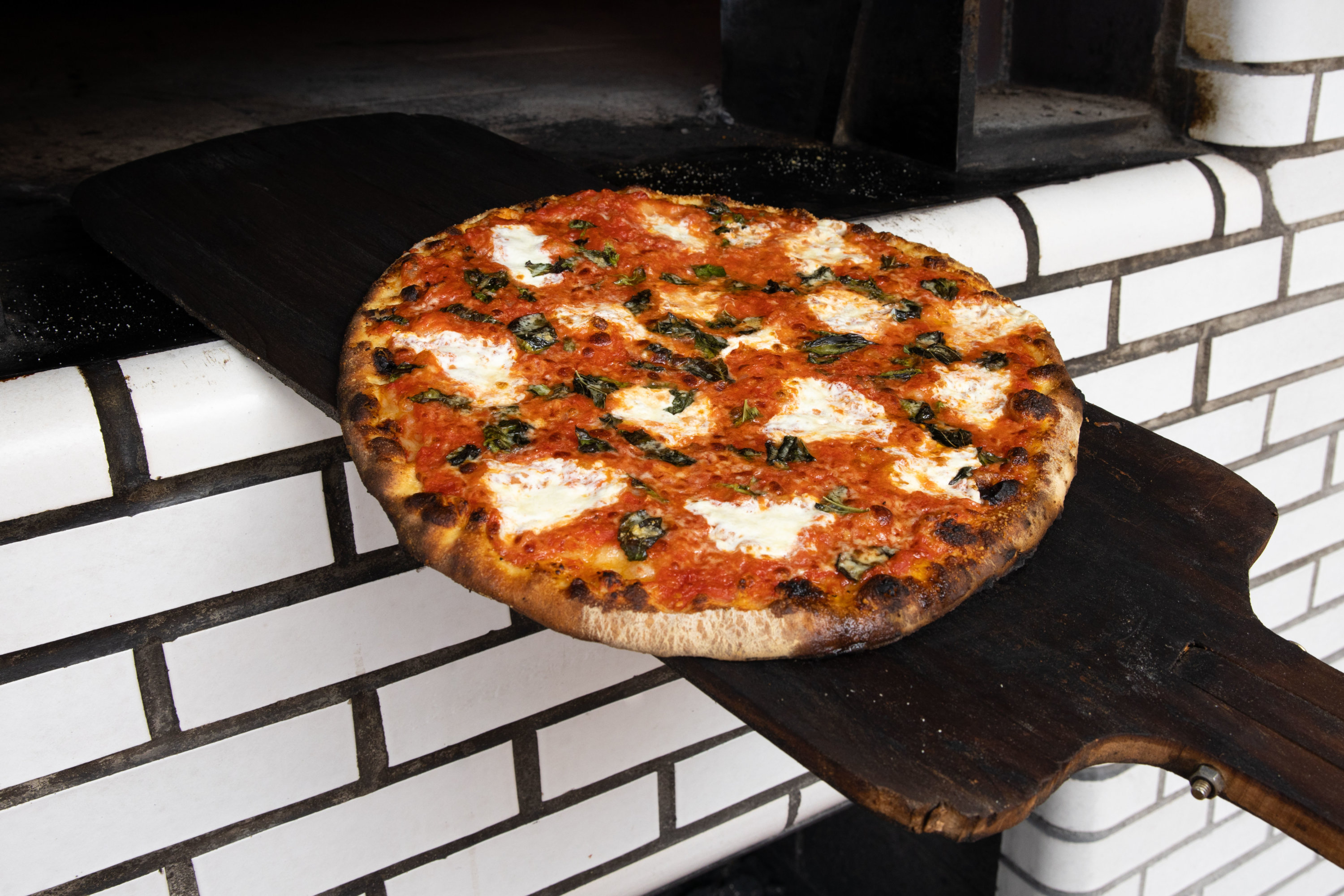
Frank Pepe Pizzeria Napoletana
Style: New Haven—thin, coal-fired crusts, judiciously topped with crushed tomatoes and pecorino and served on sheet trays.
Who’s behind it: The 97-year-old original Frank Pepe’s in New Haven is one of the godfathers of the American pizza movement. The business—which now has 13 locations—is run by the founder’s grandchildren.
Where to find it: In Westfield Montgomery mall (7101 Democracy Blvd., Bethesda). An Old Town location (3231 Duke St., Alexandria) is on the way.
What to get: The signature clam pizza—a garlicky mix of fresh clams, oregano, pecorino, and olive oil—and the simple, pecorino-dusted tomato pie.
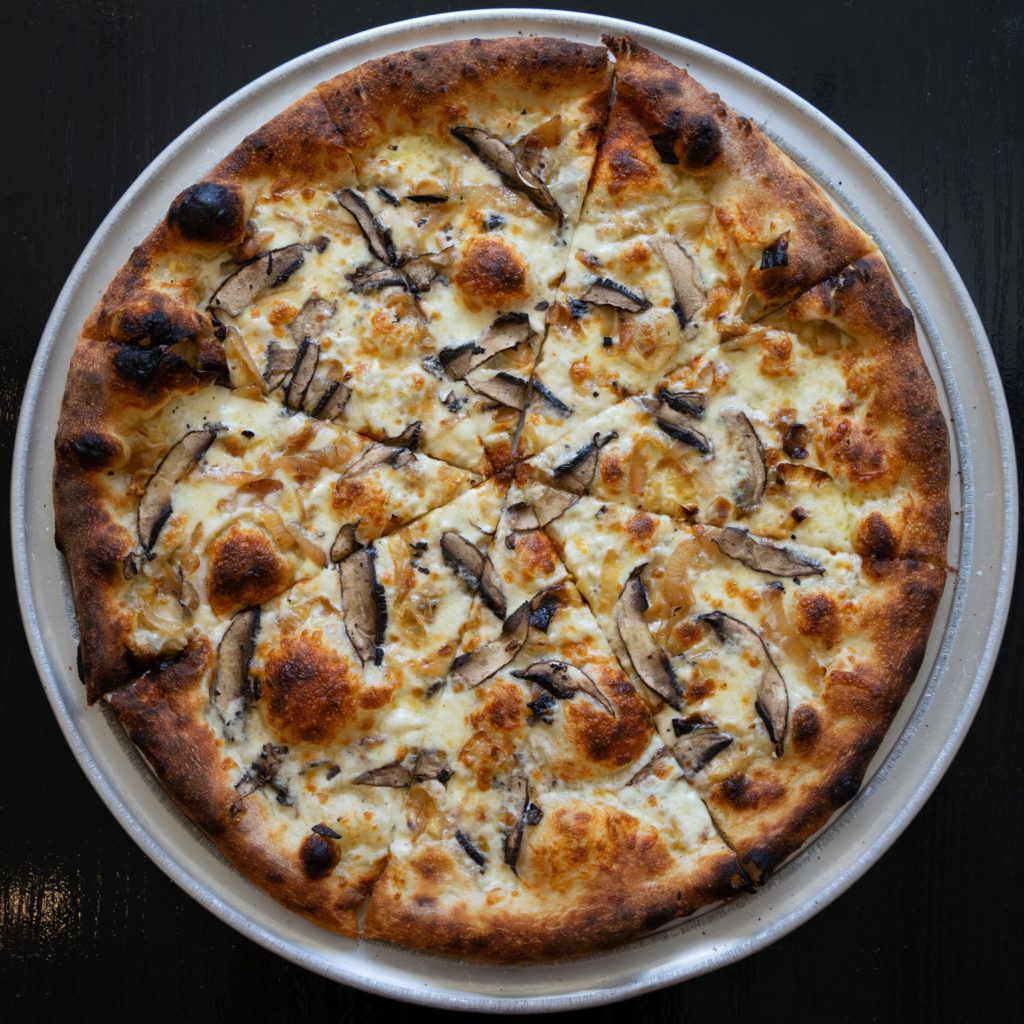
Andy’s Pizza
Style: Classic New York—big deck-oven pies with pulls of melted mozzarella, zesty sauce, and a bubbly, flavorful crust. Bonus: It offers slices along with pies.
Who’s behind it: Andy Brown, a self-taught pizzamaker whose cheese entry won a gold medal at the 2021 World Pizza Championships.
Where to find it: Tysons, NoMa, Shaw, and, as of March, Adams Morgan (2465 18th St., NW).
What to get: Anything—this is dreamy stuff, beloved by chefs, little kids, and bar-goers alike. But if you must make a decision, the white pizza; basic pepperoni; and pepperoni done up with burrata, shredded mozzarella, parm, basil, and hot honey.
Boogy and Peel
Style: A stoner’s daydream—Big Mac pizza! Italian sub pizza!—on a Neapolitan-inspired crust.
Who’s behind it: Former Rose’s Luxury sous chef Rachael Jennings. The place is named after one of her dogs.
Where to find it: Right off Dupont Circle. Jennings shares her restaurant’s space (1 Dupont Cir., NW) with her brother, who runs . . . a gym.
What to get: That dubious-sounding Italian-sub pie—with Duke’s mayo, iceberg lettuce, onions, and cold cuts—is actually delicious. So, too, the Macha ’Roni, with pepperoni, peanut salsa, basil, and honey. And though the wings don’t look like much, they’ve got great flavor.
This article appears in the July 2022 issue of Washingtonian.



